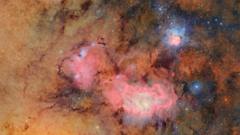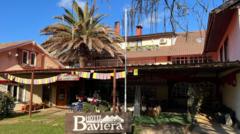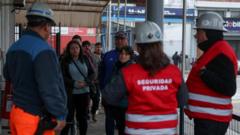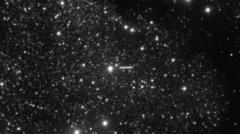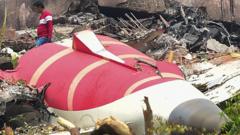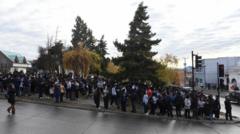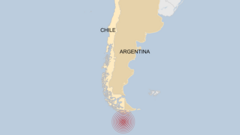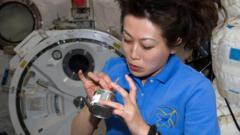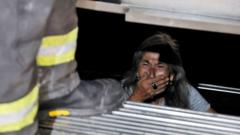The newly launched Vera Rubin Observatory in Chile has revealed its first celestial images, captivating astronomers and enthusiasts alike with spectacular visuals of the Trifid and Lagoon nebulae. Located on the Cerro Pachón mountain, this high-powered astronomical facility features the world’s most advanced digital camera, equipped to delve deeper into the cosmos than ever before.
The first image released by the observatory presents a vibrant scene of colorful gas and dust clouds situated approximately 9,000 light years away, positioned within a stellar nursery. This revolutionary telescope is expected to map the Milky Way, identify hazardous asteroids, and seek to uncover truths about dark matter—a yet-to-be-explained substance that comprises a majority of the universe.
Professor Catherine Heymans, an Astronomer Royal for Scotland, expressed the significance of this moment, reflecting on her 25-year journey towards this endeavor. The UK, a vital partner in this astronomical project, will establish data centers to process the influx of detailed images as the telescope continuously surveys the night sky.
Astronomers believe that the Vera Rubin Observatory could lead to a tenfold increase in the discovery of solar system objects. Equipped with a camera boasting 3,200 megapixels, the telescope is engineered to capture an extraordinary amount of light in its unique three-mirror design, ensuring optimum image clarity.
Every three days over the next decade, the observatory will engage in a Legacy Survey of Space and Time, capturing up to 10 million images per night. This repeated observation is key to studying transient phenomena and any changes in the cosmos, presenting an opportunity for groundbreaking discoveries.
Elana Urbach, a commissioning scientist, highlighted the objective to analyze the universe's history, allowing astronomers to see faint galaxies and cataclysmic events from billions of years ago. The observatory promises to assist researchers in monitoring asteroids that pose a potential threat to Earth.
The telescope's capabilities extend to revealing faint light and distortions emitted from distant objects, shedding light on the existence of uncharted celestial bodies and the long-sought Planet Nine, believed to orbit far beyond the known solar system.
Described as a transformative tool for astronomy, the Vera Rubin Observatory is anticipated to revolutionize our comprehension of the universe for many decades to come. As Professor Alis Deason puts it, "It's going to fuel what we do for many, many years" by providing unprecedented access to the mysteries of our galaxy.
The first image released by the observatory presents a vibrant scene of colorful gas and dust clouds situated approximately 9,000 light years away, positioned within a stellar nursery. This revolutionary telescope is expected to map the Milky Way, identify hazardous asteroids, and seek to uncover truths about dark matter—a yet-to-be-explained substance that comprises a majority of the universe.
Professor Catherine Heymans, an Astronomer Royal for Scotland, expressed the significance of this moment, reflecting on her 25-year journey towards this endeavor. The UK, a vital partner in this astronomical project, will establish data centers to process the influx of detailed images as the telescope continuously surveys the night sky.
Astronomers believe that the Vera Rubin Observatory could lead to a tenfold increase in the discovery of solar system objects. Equipped with a camera boasting 3,200 megapixels, the telescope is engineered to capture an extraordinary amount of light in its unique three-mirror design, ensuring optimum image clarity.
Every three days over the next decade, the observatory will engage in a Legacy Survey of Space and Time, capturing up to 10 million images per night. This repeated observation is key to studying transient phenomena and any changes in the cosmos, presenting an opportunity for groundbreaking discoveries.
Elana Urbach, a commissioning scientist, highlighted the objective to analyze the universe's history, allowing astronomers to see faint galaxies and cataclysmic events from billions of years ago. The observatory promises to assist researchers in monitoring asteroids that pose a potential threat to Earth.
The telescope's capabilities extend to revealing faint light and distortions emitted from distant objects, shedding light on the existence of uncharted celestial bodies and the long-sought Planet Nine, believed to orbit far beyond the known solar system.
Described as a transformative tool for astronomy, the Vera Rubin Observatory is anticipated to revolutionize our comprehension of the universe for many decades to come. As Professor Alis Deason puts it, "It's going to fuel what we do for many, many years" by providing unprecedented access to the mysteries of our galaxy.

